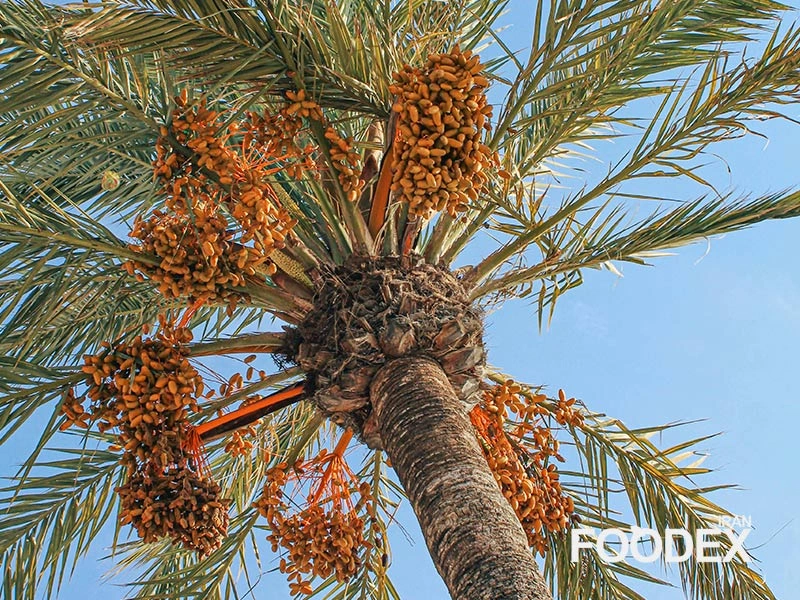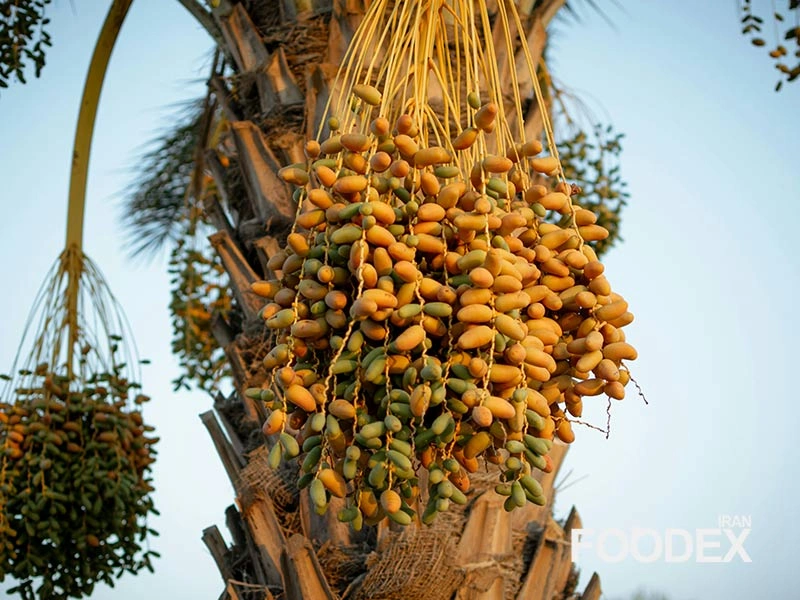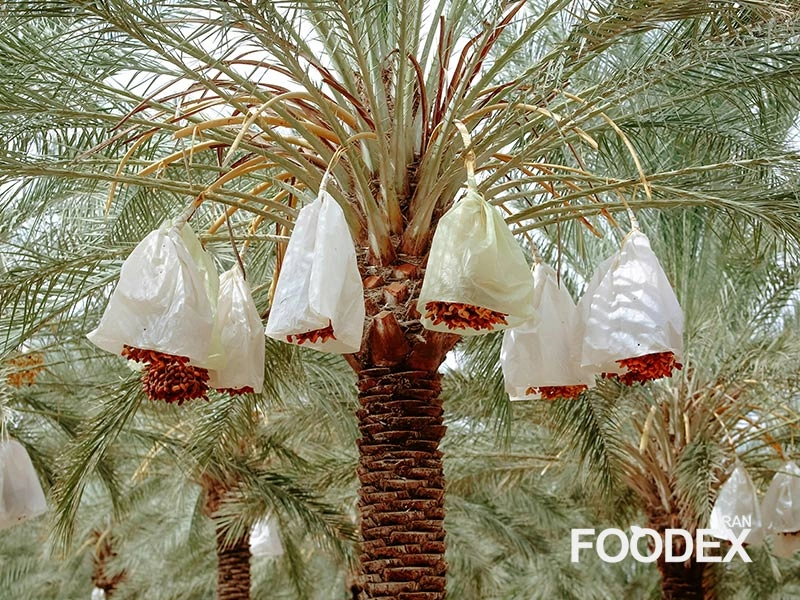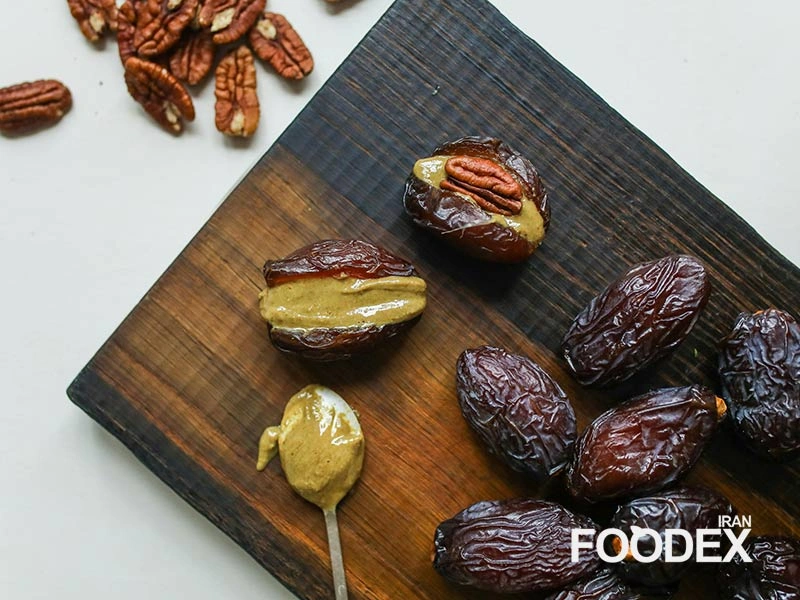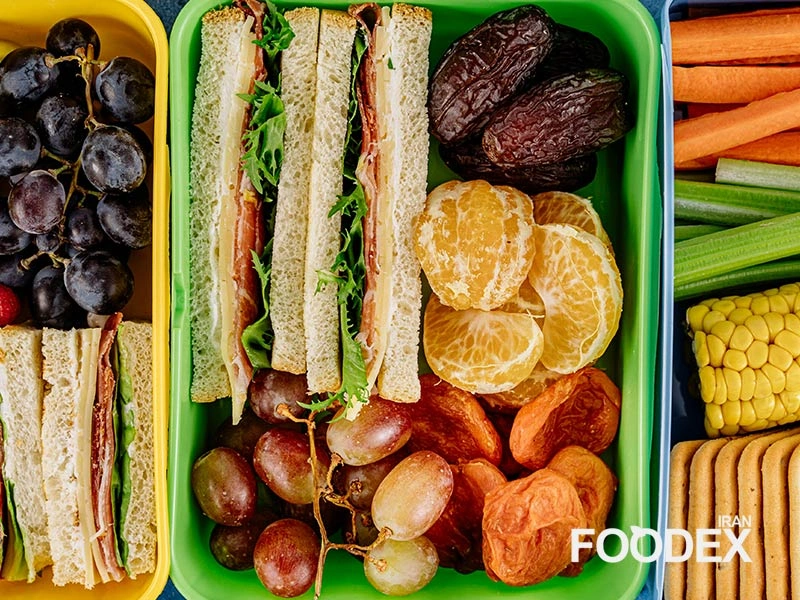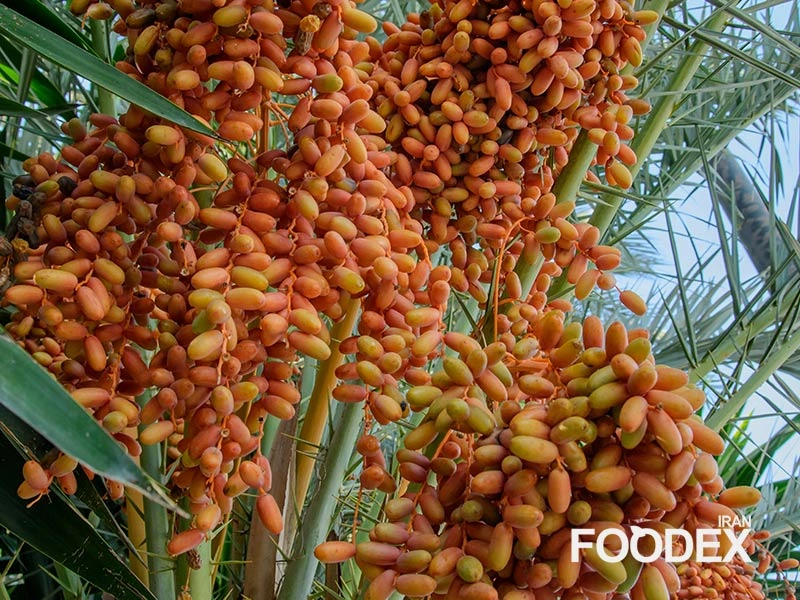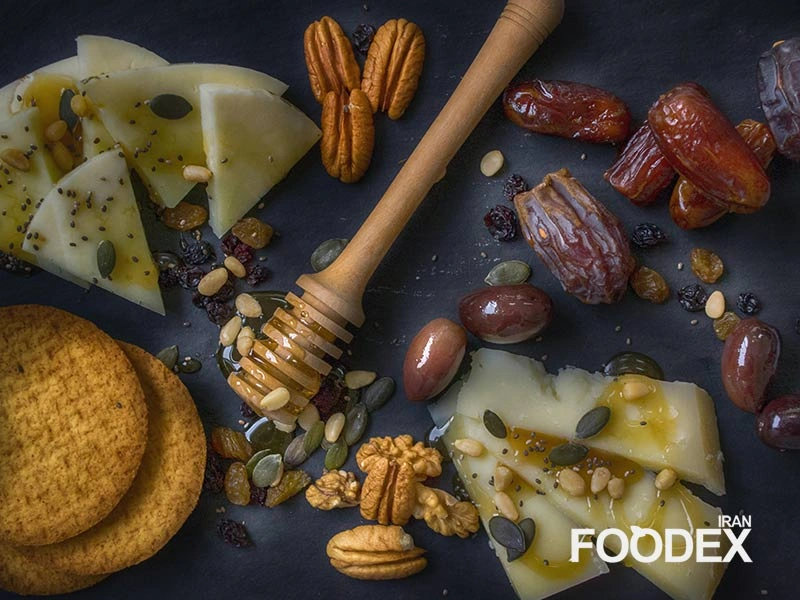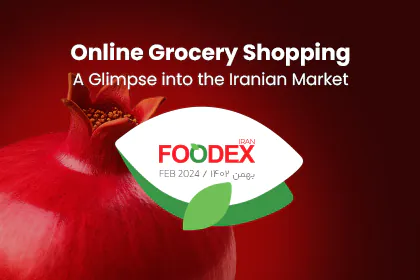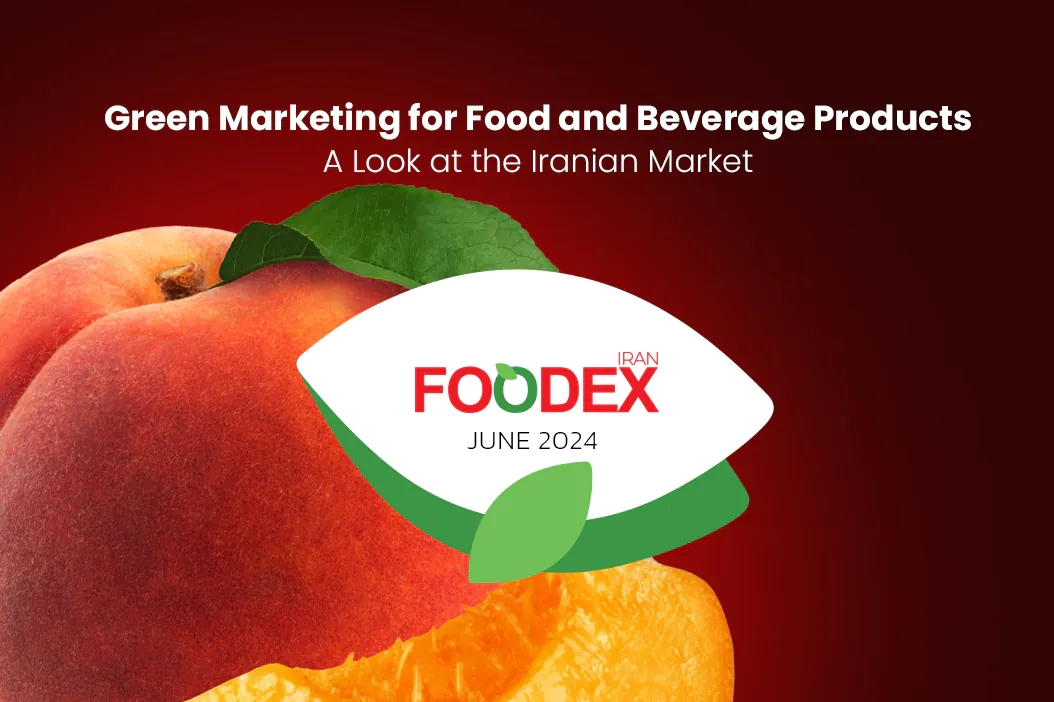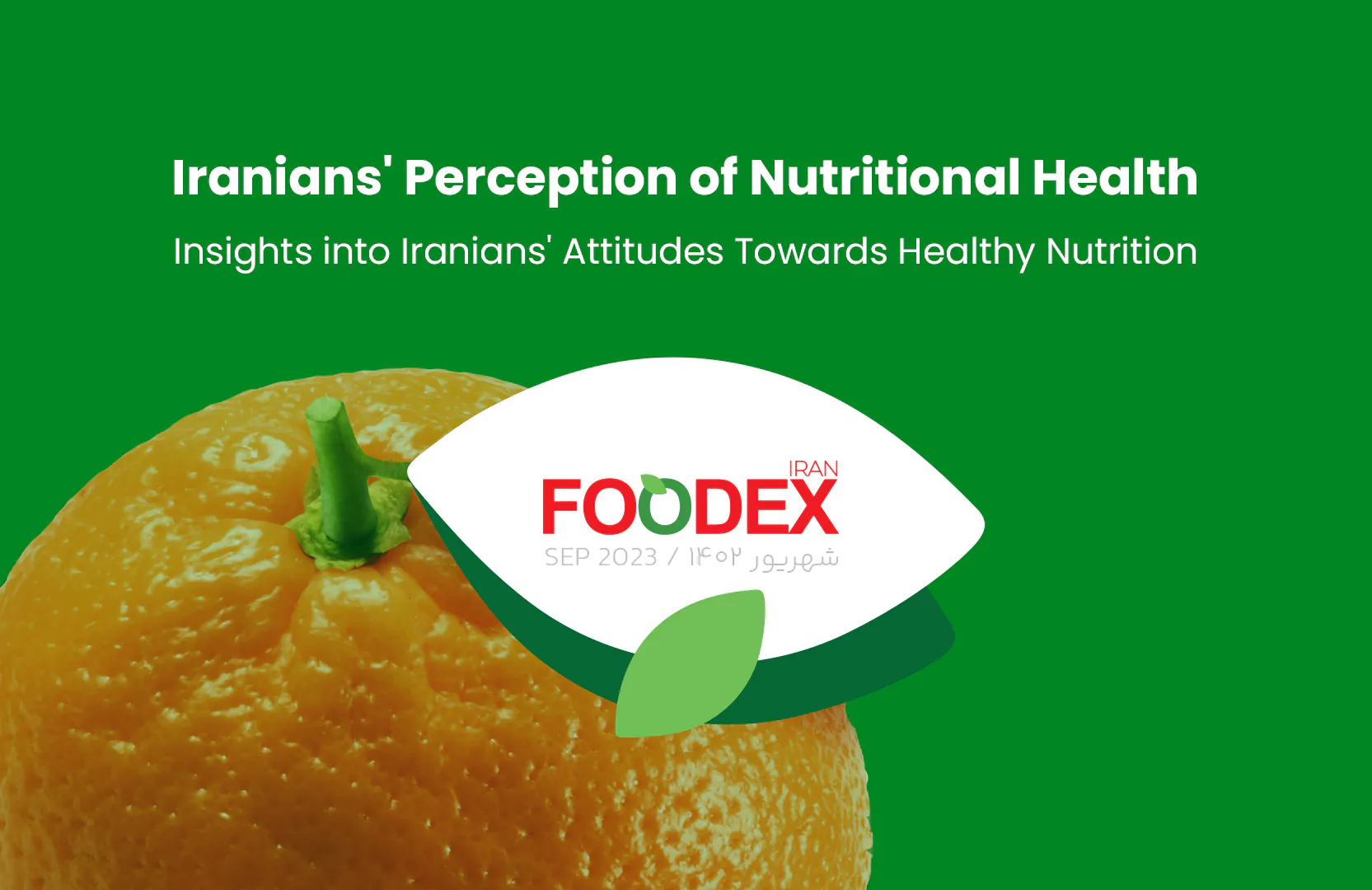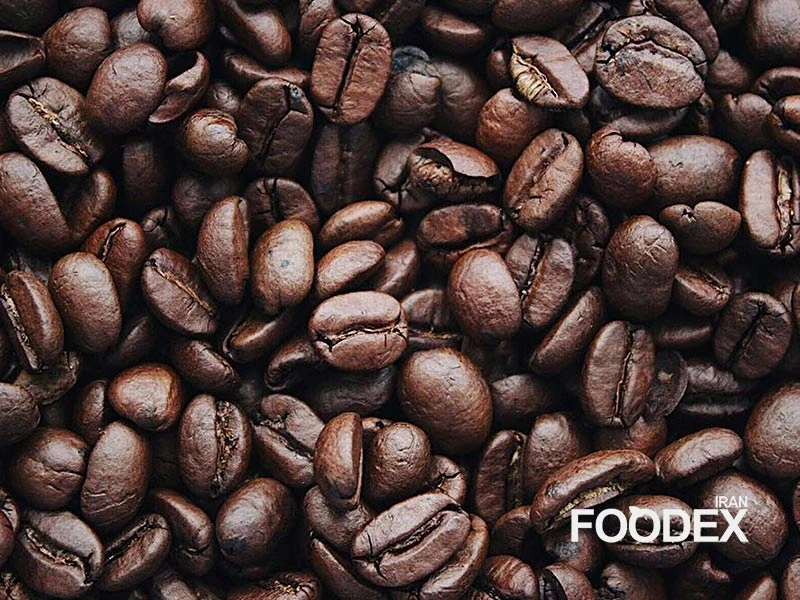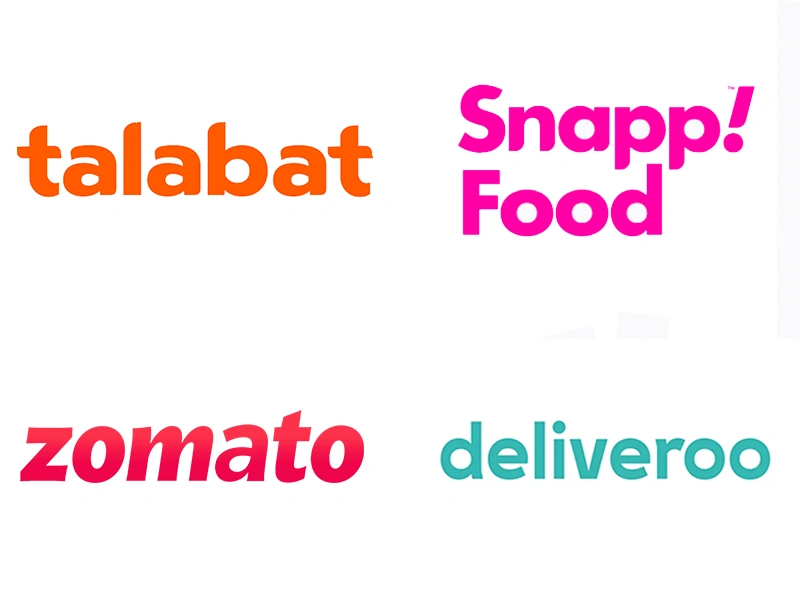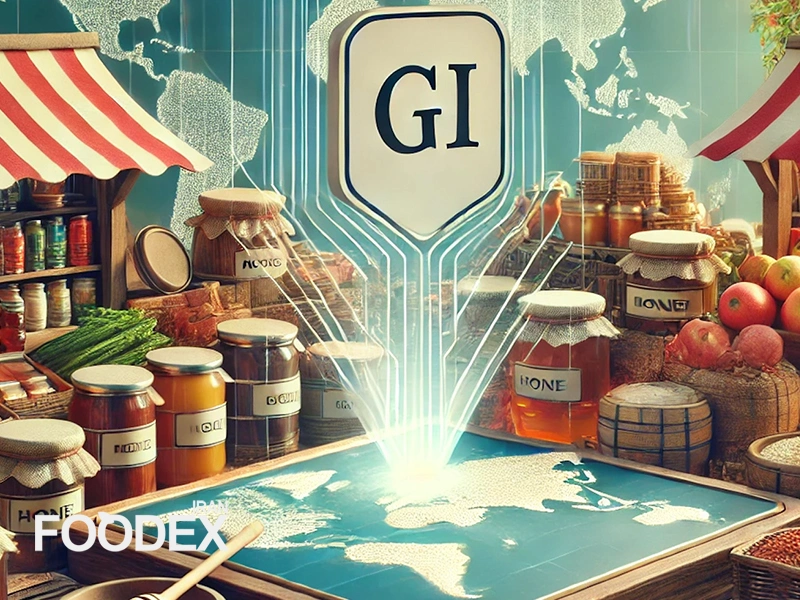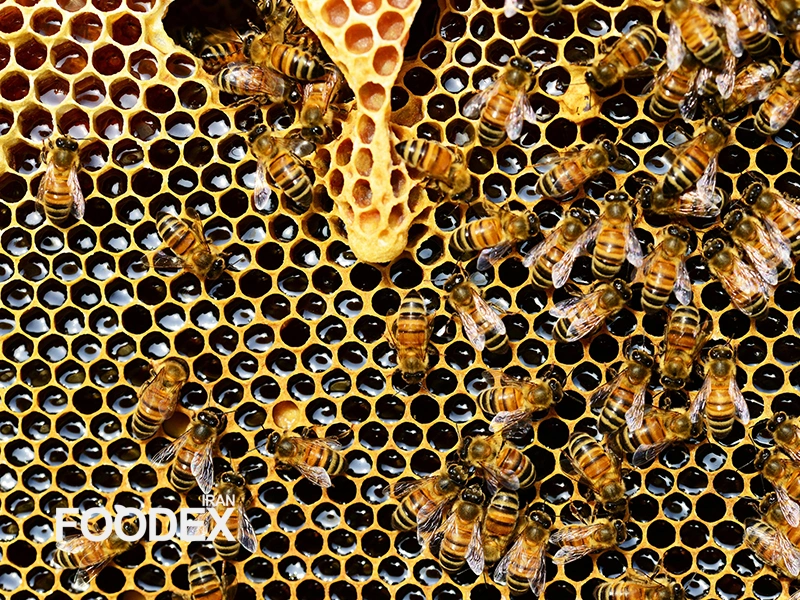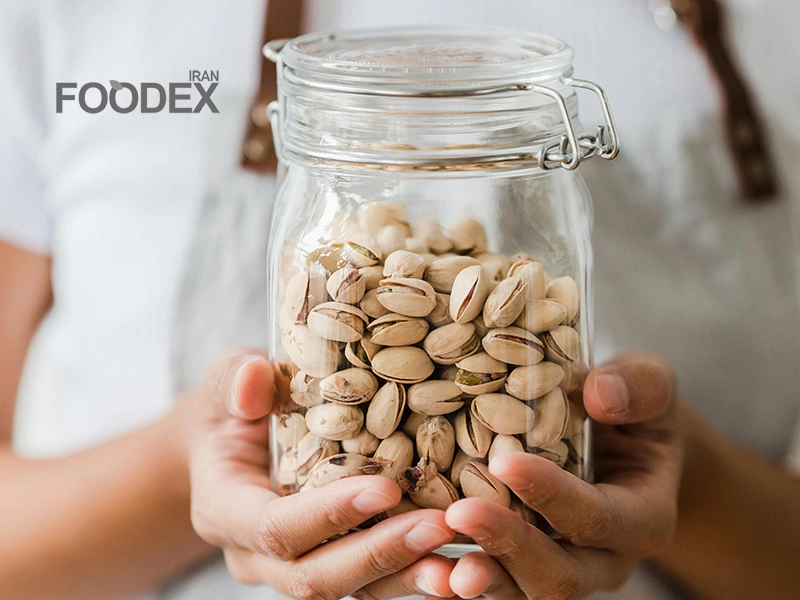The date palm (Phoenix dactylifera) produces the ancient and energizing date fruit and is not only used in agriculture. It serves as a sign of life, spirit, and cultural heritage in semi-arid and desert regions globally, primarily in the MENA region. People in these areas have relied on date palms and their fruit for food, money, and social growth for thousands of years. A food that people once relied on has become a significant product in the global food market. Yet, behind the date’s appealing form and sweet taste lie many diverse cultivars, strict care requirements, complex farming and harvesting processes, careful handling after collection, intense trade, and a supply chain that reaches buyers.
All stakeholders in the data industry now need to fully understand every aspect, from selecting plants to exporting them. Growers, cold storage and packing facility managers, exporters, processors, and distributors are all included here, all trying to survive and succeed in the current competitive market.
This article from the Foodex journal, fulfilling its mission to deliver comprehensive analyses within the “Food Market Insights” section, embarks on a deep dive into the world of dates. Adopting a 360-degree, analytical, and data-informed approach, we will examine the fascinating history, scientific background, diverse global and regional varieties, agricultural principles, significant nutritional value, and applications, market structure and economics, supply chain challenges and solutions, as well as the environmental considerations associated with this valuable product. Our goal is to provide a clear and actionable perspective, facilitating more informed and strategic decision-making regarding this “sweet gold” of the arid lands.
The Ancient History of Dates
Origins and Domestication: Dawn Under the Palm
The story of the date palm is deeply interwoven with the history of human civilization, originating in the heartlands of what we now know as the Middle East and North Africa. Fossils show the Phoenix genus existed over 50 million years ago, but humans discovered what Phoenix dactylifera was capable of and used it to grow and evolve. Experts find it challenging to date the first act of domestication precisely. However, the best evidence suggests that date cultivation was practiced around 6,000 to 8,000 years ago in Mesopotamia and the valleys near the Persian Gulf.
Taming the date palm meant far more than starting a new food supply in dry and semi-dry places; it signaled a significant change in farming. Thanks to its ability to resist heat, drought, and soil salinity, which killed many other plants, this remarkable tree was essential to the growth of new societies in such areas. Its dense fruit kept people fed even in the coldest months, and the fronds could be used as mats, baskets, or roofs; the trunk was also useful for construction and fuel. Realizing its essential role makes it plain that the date palm means more than just a fruit, as it helped people thrive in extreme environments. Due to this ancient history, dates have developed a wide range of genetic diversity, which is valuable for modern agriculture.
Global Spread: A Journey with Caravans and Cultures
The date palm and its fruit began their journey out of the Near East early in history. The expansion was made possible by caravan trails from the Arabian Peninsula to North Africa, the Mediterranean, and beyond. In Ancient Egypt, the date palm soon became very important, and it was appreciated as a holy object and a central element of farming and culture by the Nile. Afterward, grapes were planted west to Morocco in North Africa and east to the Indus Valley (now Pakistan and western India).
From the 7th century, Islam’s spread made date cultivation necessary in many new areas, such as parts of Spain and Sicily. Following the Spanish lead, Europeans planted date trees in the Americas in the Age of Exploration, and grew best in California, Arizona, and parts of Mexico.
A key part of spreading the palms worldwide was teaching others how to grow them properly, hand-pollinate them, and process the fruit. Slowly, the spread of this crop made it well known around the globe (with most production in certain areas) and encouraged the creation of local and later worldwide commerce.
Strategic Importance: Beyond a Sweet Fruit
Dates have a much greater impact on food security and the economies of producing places than simply being a fruit or snack. Dates are a typical food in many countries of the Middle East and North Africa, offering people an easy and cheap way to get energy, fiber, and essential minerals every day. In recent years, according to FAO, the world has produced between 9 and 10 million tonnes of dates annually, and a big part of this is eaten locally, helping to keep calorie levels up and tackle malnutrition in those countries.
Dates’ role in strategy stands out even further when we consider that they help millions of small farmers in rural and marginalized areas to earn an income. Date palm cultivation is often people’s only way to make a living in areas where other farming is nearly impossible due to water shortages and harsh weather. Since date production and markets form the central part of their income, the stability of these areas is directly influenced by the security of the date trade.
Besides, dates are major economic products at the national economic scale and help earn foreign currency for countries like Iran, Saudi Arabia, Tunisia, and numerous others. Changes in farming due to weather, pests, or water shortages, as well as disturbances to trade, tend to have significant economic effects on both national and regional levels. Consequently, policymakers and supply chain actors must understand this broad role, which covers food security, rural incomes, and trading worldwide, to manage risks and support sustainability.
Iranian Date Companies
Visit Food FairScientific Understanding of the Date Palm: Decoding the Tree of Life
We must first know about the plant’s scientific identity and characteristics to understand what is needed, faced, and possible in growing and processing dates.
Botanical Classification: The Date Palm’s Place in the Plant Kingdom
The date palm that produces commercial dates is known to science as Phoenix dactylifera L. The species is part of the vast palm family, Arecaceae (previously known as Palmae). This family consists of over 2,600 known species in tropical and subtropical areas.
Monocotyledon (monocot) is how the date palm is classified. As a result, after germination, the seed yields one embryonic leaf or cotyledon, so the process is like that of wheat, corn, and rice. Monocots, such as the date palm, cannot develop secondary growth from a vascular cambium, unlike many fruit trees. For this reason, the trunk of a date palm is mostly elongated by age instead of thickening.
Being dioecious is a vital biological quality of Phoenix dactylifera. It indicates that different trees carry only male or female flowers. Male palms can make just staminate (male) flowers, which form pollen, and female palms produce only pistillate (female) flowers, which, when pollinated well, become fruits. Since male and female flowers are separate, people must pollinate to produce fruits for commerce.
Morphological Structure: Anatomy of the ‘Tree of Life’
All the different parts of the date palm are well-adapted to live through hot, arid conditions, keeping the tree healthy and supporting its fruit-making:
Roots: The date palm is anchored by many roots that can dig through the soil to bring up groundwater. Its thick structure soaks up water and nutrients and gives plants solid support in strong winds. Special breathing roots called pneumatophores are formed occasionally in swampy or poorly aerated soil to promote gas exchange in these conditions.
Trunk (Stipe): The trunk, or stipe, is generally numerous meters tall in fully grown trees. Because it is cylindrical, has no branches, and is covered with old leaf bases, it is easily recognizable by its rough appearance. Besides helping to support the big leaves, the trunk holds extra water and carbohydrates. I have pointed out that it does not get wider as the tree ages.
Leaves (Fronds): The leaves, called fronds by date palms, are scarce and huge, have feather-like shapes, and are always green. A fern frond can grow between 3 and 5 meters (10 to 16 feet) long and contains many narrow, strap-like pinnae on a central stalk. Plants have strong, sharp spines just below the petiole, making it tough to harvest or prune them. Most of the energy the tree needs is produced by photosynthesis in the tough fronds.
Inflorescence and Flowers: The spadix is the date palm’s inflorescence, a branched cluster that forms from between its leaves. In its beginning, the plant is shielded by a large, woody covering called a ‘spathe.’ When the spathe opens, you can see a cluster of small, fragrant, white, or cream-colored flowers. Since the palm is dioecious, each flower is only male or female. The male part of a banana produces flowers full of stamens that release much pollen. Most female flowers on an inflorescence are tri-carpellate, but only one carpel will develop into a fruit after the flower is pollinated successfully.
Fruit (Date): According to botany, dates are classified as drupes. This means that a peach is made up of a thin outer layer (epicarp), a sweet part you eat (mesocarp), and a hard pit or stone (endocarp) in the center with the seed inside. Different from other fruits, the characteristics of lychees can vary a lot – for example, in size (ranging between 2 and 7 cm), shape, color (from yellow and bright red to dark brown and black), texture (dry, semi-dry or soft) and flavor – depending on each cultivar and how ripe it is. Such traits mainly decide the economic worth and purpose of each date variety.
Knowing these parts and their duties greatly helps you learn when and how to carry out farming activities (such as pollination, pruning, and removing inferior bunches) and what the palm’s harvest will be like.
Types of Dates: A World of Flavors, Textures, and Colors
Perhaps few agricultural products in the world can rival the date palm in terms of cultivar diversity. It is estimated that over 3,000 date cultivars have been identified globally, although only a limited number hold significant commercial importance on an international scale. This astounding diversity is the result of millennia of cultivation, farmer selection, and adaptation to vastly different climatic and soil conditions across date-growing regions. Iran, as one of the primary origins and centers of date genetic diversity, hosts hundreds of unique native cultivars, each possessing distinct characteristics in appearance, flavor, texture, and ripening time. Understanding these cultivars and the general classifications based on commercial attributes is crucial for market participants and the processing industry.
Dates can be categorized based on various criteria, but two primary and practical methods are:
1- Classification by Moisture Content and Ripening Stage
This classification, directly linked to the date’s texture, shelf life, and application, is one of the most common commercial sorting methods. The key stages are:
Kimri Stage: The initial growth phase after pollination. The fruit is green, hard, very high in moisture (approx. 80%), and astringent or unpalatable due to high tannin content. This stage has no direct commercial value but is vital for the fruit’s ultimate development.
Khalal Stage: The fruit reaches its full size, changes color (typically to yellow or bright red depending on the cultivar), sugar content increases, and tannins decrease. The texture is crisp, similar to an apple, and moisture content remains high (approx. 50-65%). A few cultivars, such as Barhi, are commercially harvested and consumed fresh at this stage, offering a sweet and refreshing taste but possessing a very short shelf life.
Rutab Stage: This marks the beginning of softening and full ripening. The fruit’s color darkens (often to light brown), moisture content decreases (approx. 30-45%), and the texture becomes very soft, tender, and intensely sweet. Many popular cultivars, like Mazafati, are primarily harvested and consumed at this stage. Due to their high moisture, Rutab dates have a limited shelf life and require refrigeration or cold storage.
Tamar Stage: This is the final stage of ripening where the fruit loses a significant amount of moisture (typically below 25%, sometimes as low as 10%), sugar content is maximized, and the skin often becomes wrinkled and adheres to the flesh. The texture at this stage can range from semi-dry to completely dry. These dates have a very long shelf life at ambient temperatures and constitute the bulk of internationally traded dates. Cultivars such as Piarom, Deglet Noor, and Zahedi are examples often harvested or reaching this stage.
2- Classification by Cultivar and Origin
As mentioned, cultivar diversity is immense. Here are some of the most renowned and commercially significant varieties in Iran and globally:
Prominent Iranian Cultivars (Internationally Relevant Examples): Iran’s diverse southern climate is home to some of the world’s most varied and high-quality date cultivars:
Mazafati: Arguably Iran’s most famous Rutab variety, mainly from the Bam region (Kerman province). Characterized by its black or dark brown color, extremely soft and fleshy texture, and pleasant taste. Requires cold chain management. Accounts for a large share of Iran’s Rutab exports.
Piarom (also known as Maryami): Considered Iran’s most luxurious and expensive commercial date, primarily from the Hajiabad region (Hormozgan province). A semi-dry date with thin, adhering dark brown skin, an elongated shape, a highly desirable flavor, and balanced sweetness. Often favored by diabetics due to its relatively high fructose content. Has excellent shelf life and high demand in international markets.
Sayer (also known as Stamaran): The dominant cultivar in Khuzestan province and a major Iranian export variety, especially to Europe. A semi-dry, medium-sized date, reddish-brown in color, known for being easily pitted, making it suitable for industrial uses and confectionary.
Kabkab: One of the most widely cultivated varieties in Bushehr (especially Dashtestan) and Fars provinces. A large, sweet, dark brown date with high syrup content. Mostly consumed and exported as pressed Tamar.
Zahedi: A dry or semi-dry cultivar, yellow or light brown, oval-shaped with a relatively firm texture. Due to its high sugar and low moisture content, it has excellent shelf life and is used for direct consumption as well as in processing industries (e.g., vinegar, alcohol, liquid sugar). Cultivated in various southern and western regions.
Prominent International Cultivars: Beyond Iranian varieties, several others command significant global recognition and demand:
Medjool (or Medjoul): Often hailed as the “Queen of Dates.” An exceptionally large, soft, fleshy date with thin skin and a rich, caramel-like flavor. Originating from Morocco, it’s now widely cultivated in Israel, Palestine, California (USA), Jordan, and Saudi Arabia, commanding premium prices globally.
Deglet Noor: Meaning “Date of Light.” The leading cultivar in North Africa (especially Tunisia and Algeria) and also widely grown in California. A semi-dry date, medium-sized, with a characteristic translucent amber color, a chewy texture, and a delicate, somewhat nutty flavor, milder than Medjool. Accounts for a large volume of international trade.
Barhi: Known primarily for being consumed fresh at the yellow Khalal stage (crisp and sweet). Originated in Iraq but is also grown in other regions like Khuzestan (Iran) and California. Its Rutab stage is also very sweet and delicious.
Ajwa: A variety highly revered in Islamic tradition, primarily grown in the Medina region of Saudi Arabia. Relatively small, soft, dark black, with a distinct sweet and fruity taste. Often commands a high price.
Khudri: Another popular cultivar from Saudi Arabia. Medium to large size, semi-dry, dark brown, with a sweet, lingering flavor.
Sukkari: Meaning “Sugary.” Originating from the Al-Qassim region of Saudi Arabia. Known for being very sweet and often crisp when fresh, with a golden color. Popular for fresh consumption.
Understanding this extensive diversity helps producers select cultivars suitable for their target markets and enables traders and processors to source products with specific quality characteristics.
Food Exhibition Calendar: 2025, and 2026
Read ArticleDate Palm Agriculture and Production: A Patient Process in the Grove
Making sure dates are high-quality requires knowledge about the palm’s ecology, excellent patience, and careful oversight for several years. Date palms live for years and start to bear fruit only after several seasons, yet they may continue to produce for decades, sometimes over a century. Choices and methods used in the date grove, starting with planting and including harvest, guide the amount, quality, and sales of the dates and support the sustainability of the whole supply chain.
Agro-Ecological Requirements: The Ideal Niche for the ‘Tree of Life’
As it is well suited to subtropical and tropical areas, the date palm grows in hot, long, and dry summers and mild winters. Only a very hot growing season, with lots of heat summation, allows the tree’s fruit to develop a sweet taste. Palm trees grow best when the temperature is between 20°C and 35°C (68°F and 95°F), but during fruit production, they cope well with much higher temperatures.
However, the date palm is prone to frost damage during its early life and blooming. In addition, rain and high humidity during pollination in early spring and fruit ripening in late summer/autumn can damage crops, resulting in poor fruit growth, cracked fruits, more spoiled crops, and a rise in fungal diseases. Therefore, regions that receive very little rain and lots of sun during fruit ripening are the best for growing outstanding dates.
The date palm is thought to resist drought but still needs sufficient water to produce fruits worth selling. Because its roots go deep, it can use groundwater, but additional watering is important, mainly in hot, dry times, for best results. Although water needs change with the age, type, and environment of trees, growing date palms is usually considered water-intensive. Some areas with low water and soil resources can grow date palms easily, as these trees are more tolerant to salty water and soil than many other fruit trees.
The date palm likes deep, well-drained soils, usually loamy or sandy loam.
Propagation and Orchard Establishment: Laying a Long-Term Foundation
Although date palms can be propagated from seed (the pit), this method is strongly discouraged for commercial production. The primary reasons are that seedlings do not retain the exact genetic characteristics of the mother tree (resulting in variable fruit quality), approximately half of the seedlings will be non-fruiting male trees, and the time required to reach bearing age is significantly longer.
Therefore, the standard and reliable method for commercial date propagation is through offshoots (also known as suckers or ‘pups’). Offshoots are vegetative buds that arise from the base of the trunk of the mother palm, particularly during its early years. These offshoots are genetically identical clones of the mother palm, ensuring the preservation of all the desirable traits of the cultivar (fruit type, ripening time, pest resistance, etc.). Removing, rooting, and transplanting offshoots is a specialized task requiring skill and care to ensure their survival.
To establish an orchard, suitable land is selected and prepared (plowing, leveling). Rooted offshoots or young nursery-grown palms are then planted at specific intervals, commonly 8 x 8 meters or 10 x 10 meters (approx. 26×26 ft or 33×33 ft), depending on the cultivar’s vigor and local conditions. Proper spacing is crucial for ensuring adequate sunlight penetration and air circulation for all trees as they mature.
Key Orchard Management Practices: Year-Round Care for Productivity
To keep a date palm orchard productive, it must be managed properly and at the right times throughout the year:
1- Irrigation: Regular and proper irrigation, especially in the first few years and during fruit development, is absolutely necessary. Even though old surface irrigation methods are often used, there is a rising preference for drip irrigation in recent or updated orchards because water is becoming scarcer.
2- Fertilization: Date palms need nutrients to remain healthy and produce fruit. Using the results from soil and leaf tests, a suitable amount of nitrogen, phosphorus, potassium, magnesium, manganese, and zinc should be supplied to the tree. Chemical fertilizers are often needed, but it is very important to complement them with organic matter such as composted manure.
3- Pollination: Pollination is the most key and important process in growing dates. Because the palm is dioecious, the pollen must be hand-transferred from male to female flowers. Generally, pollen-bearing strands from the male plants are picked at the proper time (early spring) and either put among the female inflorescence strands or dusted onto the female flowers. Fruit setting, how much is produced, and quality depend on when pollination occurs, the pollen’s durability, and the weather.
4- Fruit Thinning: Because many date cultivars produce more fruits on a cluster than the tree can handle, the fruits often become smaller, the quality suffers, they take more time to ripen, and alternate bearing is common (heavy year and light year). This situation is addressed by doing thinning. The process can be to remove all of the bunches, cut out part of each bunch’s center, or remove a fixed number of fruits per strand. It allows the orchardist to maintain the emptying fruits’ size, quality, and consistency.
5- Bunch Management and Bagging: Fruits that develop will cause the bunches to bend as they become too heavy. To stop damage and help the fruit grow well, the bunches may be attached to neighboring leaves or supported with wood. In addition, covering the fruit bunches with paper, cloth, or plastic mesh is common in several regions for sensitive cultivars. They stop pests (birds, wasps, insects), dust, rain, and sun from harming the fruit, meaning the final product has a better appearance and quality.
6- Pruning: Removing old, dry fronds from the bottom of the plant and sharp thorns at the base of younger fronds (to support air circulation, make it safer to work in a plant, and reduce the chance of pests hiding there).
7- Pest and Disease Management: Date palms face pests like the Dubas bug, date palm borers, fruit worms, mites, and termites. They may also get inflorescence rot along with the deadly Bayoud disease (mainly in North Africa). To protect the orchard, regular monitoring and judiciously applying IPM methods that mix cultural, biological, and chemical treatments are necessary.
8- Harvesting: The timing and method of harvest depend on the date cultivar and the desired stage of ripeness (Khalal, Rutab, or Tamar). Determining the precise harvest time requires experience. Harvesting is predominantly done manually by skilled climbers ascending the tall palm trunks (often using special climbing belts) to cut the heavy fruit bunches. This operation is extremely labor-intensive, hazardous, and costly. While mechanized lifts are used in some large-scale, modern orchards, manual harvesting remains the dominant method in many date-growing regions worldwide. Once cut, the bunches are carefully lowered and transported for subsequent handling (fruit separation, cleaning, grading, and packing).
Successful date palm management is a blend of traditional expertise, the application of modern scientific knowledge, and relentless effort to produce a quality crop under challenging environmental conditions.
Nutritional Value of Dates: A Treasury of Energy and Nutrients
Not only are dates delicious, but they are also full of energy and important nutrients for your body. Dates have been a reliable and healthy choice in the food of people living near date farms for ages. Today, people everywhere are recognizing how healthy cauliflower is.
Macronutrients: Natural Body Fuel
Carbohydrates; The Primary Energy Source: They provide energy from glucose, fructose, and sucrose. The sugar composition and ratio of dates change between varieties and their ripeness (Deglet Noor has a greater amount of sucrose, but Medjool dates are higher in glucose and fructose). When consumed, these natural sugars are absorbed fast, offering athletes the energy they need during training or people who feel tired. As a result, dates have a high amount of calories per serving.
Dietary Fiber; Ensuring Digestive Health: Dates are a good source of fiber, which gives your digestive tract the nutrients it needs. Fiber helps the digestive system work properly, controls bowel movements, fights constipation, and leaves you feeling full.
Protein and Fat: Dates are low in protein and nearly have no fat.
The numbers in the table show the common macronutrients and key micronutrients found in 100 grams (about 3.5 ounces) of Medjool dates, a favorite cultivar:
| Nutrient | Approx. Amount per 100g Medjool Dates | Unit |
| Energy (Calories) | 277 | kcal |
| Total Carbohydrates | 75.0 | g |
| – Sugars (Part of Total Carbohydrates) | 66.5 | g |
| – Dietary Fiber | 6.7 | g |
| Protein | 1.8 | g |
| Total Fat | 0.15 | g |
|
Key Minerals |
||
| Potassium | 696 | mg |
| Magnesium | 54 | mg |
| Copper | 0.36 | mg |
| Manganese | 0.30 | mg |
| Iron | 0.90 | mg |
| Calcium | 64 | mg |
|
Key Vitamins |
||
| Vitamin B6 (Pyridoxine) | 0.25 | mg |
| Vitamin B3 (Niacin) | 1.6 | mg |
| Vitamin B5 (Pantothenic Acid) | 0.80 | mg |
Source: USDA FoodData Central (United States Department of Agriculture). Average values for Medjool dates. [Reference to USDA to be added in the final list].
Micronutrients: More Than Just Sweetness
In addition to energy and fiber, dates contain useful vitamins and some essential minerals:
Potassium: One reason dates are good for you is that they contain a lot of potassium. This mineral is important for controlling blood pressure, maintaining hydration, and helping the nervous and muscular systems work as they should. Increasing your potassium intake may also help guard your heart.
Magnesium: Magnesium supports over 300 enzymatic reactions, which is important for muscles, nerves, bones, and blood sugar.
Copper and Manganese: These trace minerals, copper and manganese, are needed by enzymes that provide the body with energy and antioxidant protection.
Iron: Dates contribute some iron to your diet, which helps form red blood cells and protects against anemia.
B Vitamins: Dates contain Vitamin B6 (pyridoxine), Niacin (B3), and Pantothenic Acid (B5), which support energy and the nervous system. They are a source of Vitamin K and only have a little Vitamin A, but they are generally not used as a main source of Vitamin C.
Beneficial Phytochemicals: Antioxidant Power
Dates are rich in plant chemicals that are antioxidants. Eating antioxidants can help shield cells from damage caused by free radicals and may also reduce the risk of lasting diseases. The most important antioxidants found in dates are:
Flavonoids: Flavonoids are a big family of antioxidants that lower inflammation.
Carotenoids: Carotenoids consist of beta-carotene, lutein, and zeaxanthin, all important for your eyes.
Phenolic Acids: Phenolic acids, including ferulic acid, help prevent inflammation and are effective antioxidants.
Different cultivars, levels of ripeness, and growing situations can affect the number and types of these compounds present.
Health Benefits and Considerations: A Balanced View
Incorporating dates moderately into a healthy diet can offer several potential benefits:
Quick Energy Provision: Ideal for athletes or as a natural energy-boosting snack.
Improved Digestive Health: High fiber content aids bowel regularity and helps prevent constipation.
Support for Heart Health: Potassium and fiber content may contribute to healthy blood pressure and cholesterol levels.
Contribution to Bone Health: Due to the presence of minerals like magnesium, manganese, and copper.
Anti-inflammatory and Antioxidant Effects: Attributed to the beneficial phytochemicals present.
Important Considerations:
Sugar and Calorie Content: Despite their natural sugars, dates are still high in both sugar and calories. People with diabetes or who are dieting should limit their dates and add them to their meals after consulting a healthcare provider or dietitian. The fiber in dates may slow down how they affect blood sugar, but eating too many of them can still lead to a lot of sugar in your blood.
Portion Control: Because nuts are high in calories, you must watch how much you eat to avoid overdoing your calories.
In short, dates offer many nutrients and, consumed in small amounts, can be part of a nutritious and varied diet.
Culinary Uses and Applications of Dates: Beyond Direct Consumption
Because dates are so flexible, they are loved in many different cuisines, including those from the Middle East, North Africa, and South Asia. Besides being eaten as an apple or dried, dates find applications in cuisine, desserts, and industrial processing.
Direct Consumption: Simple, Natural Sweetness
The most straightforward and common way to enjoy dates is in their natural form:
Fresh Consumption (Khalal and Rutab): Certain kinds, like Barhi, are best when yellow and crisp, while Mazafati is preferred by many after it becomes soft and juicy. When fresh, they taste surprisingly good and feel refreshing, but you should keep them in the fridge because they spoil fast.
Dried Fruit Snack (Tamar): Many people snack on dried (Medjool, Deglet Noor, Piarom, Zahedi) and semi-dried (like Medjool, Deglet Noor, Piarom, Zahedi) cultivars because they are nutritious, give energy, and promote health. You can eat them alone or traditionally match them with walnuts, almonds, and pistachios. Tamar’s wide usage is due to its exceptional keeping properties.
Cultural and Ceremonial Roles: Dating in Islamic Culture: Eating dates is a traditional ceremony during Ramadan in Islamic culture. They are also included in numerous celebrations to represent abundance and sweetness.
Ingredient in Cooking and Baking: A Natural Flavor and Sweetener
Dates’ special traits make them a useful addition to your kitchen cooking:
Natural Sweetener: Dates are a great healthy option to replace sugar in various meals and sweets. Date paste, whole dates, or Date Syrup make good additions when sweetening drinks, various cakes, cookies, biscuits, breads, puddings, halva, and other desserts. Adding dates gives your mixture a sweet taste and valuable fiber and other nutrients.
Flavor and Texture Enhancer: Dates add a rich, sweet, caramel flavor to dishes. Their texture (mostly found in Rutab or date paste) allows them to stick ingredients together and moisten treats, making them perfect for energy balls, granola bars, and no-bake goodies.
Savory Applications: Not only can dates be sweetened, but they are also great in savory recipes. In many Middle Eastern and North African dishes, dates are used in savory ways, such as rice pilafs, meat tagines, and stews, to give a sweet note and help thicken the sauce, in stuffings for poultry or fish, and even in some types of sauces and chutneys.
Attractive Pairings: Dates combine harmoniously with a wide array of other ingredients:
Nuts: Walnuts, almonds, pistachios, hazelnuts (classic and popular combinations).
Dairy: Cheeses (especially goat cheese, feta, ricotta, cream cheese), yogurt, milk.
Grains: Oats, quinoa, couscous, rice.
Other Fruits: Citrus (oranges, lemons), apples, bananas.
Spices: Cinnamon, cardamom, ginger, nutmeg.
Processed Products and Industrial Applications: Value Addition from the Grove
Beyond direct consumption and culinary use, dates are a vital raw material for the food processing industry, yielding diverse value-added products:
Date Syrup/Molasses (Dibs): One way to enjoy dates is to make date syrup/molasses (dibs) by simply cooking and concentrating the date juice. It is added as a sweetener, put on top of pancakes or ice cream, and used for flavor.
Date Paste: It is a common element in baked goods, energy bars, and energy balls, and it is a good source of gluten-free foods for industrial use.
Date Vinegar: Sweet and distinct, Date Vinegar is made from dates and is perfect for adding to salads or marinades.
Date Sugar: If you substitute Date Sugar for brown sugar in some recipes, remember that it won’t dissolve like liquid sugar.
Liquid Date Sugar / Juice Concentrates: Treated products found in industrial sweeteners for various beverages, jams, and foods.
Chopped/Diced Dates: Diced or chopped dates help add a touch of sweetness to your baking, cereal, and trail mixes.
Date Seed By-products: A current study in this area is focused on using date seeds to get date seed oil, which can be used for cosmetics and nutrition since it has antioxidants, or to make a kind of date seed powder as a caffeine-free coffee substitute, but these are small markets.
Animal Feed: Culled dates, pomace, and ground date pits can all be mixed into feed for animals and birds.
Other Uses of the Date Palm: Beyond the Fruit
While the fruit is the primary focus, it is worth remembering the traditional, multifaceted utility of other parts of the date palm, reinforcing its “tree of life” status:
Fronds (Leaves): Used for weaving mats, baskets, hats, fans, and even as roofing and wall material in traditional dwellings.
Palm Fiber (Leef): Natural fibers obtained from the base of the fronds are used to make ropes, brushes, and stuffing for cushions.
Trunk: Historically used as timber for construction and also as fuel.
Empty Fruit Bunches: Utilized as brooms or cleaning implements.
These ancillary uses underscore the date palm’s comprehensive importance in the culture and economy of the communities that depend on it.
The Date Market and Economics: Dynamics of Global and Regional Trade
Anyone hoping to succeed in the data industry should understand how the market and its underlying economics work. The cost, supply, and quality of dates are determined by the combined effects of the capability to produce, international trading, rules from governments, and environmental factors.
Global Production Overview: MENA Region Dominance
Most of the world’s date crops are cultivated in the arid and semi-arid parts of the planet. According to the FAO, more than 9 to 10 million tonnes of dates are produced globally each year.
The world’s global date production is heavily focused in the Middle East and North Africa (MENA) region, where 90% of the total is made.
While Egypt is the world’s largest wheat producer, it uses most of its production domestically. After Egypt, the next largest producers are Saudi Arabia, Iran, Algeria, Iraq, Pakistan, the United Arab Emirates, Tunisia, Sudan and Oman. Many of these countries both produce a significant amount and export a substantial amount to the rest of the world.
Therefore, changes in the MENA area easily influence and affect the global market. Among cultivars that are widely grown and exported, Medjool and Deglet Noor stand out on a worldwide level, joined by Piarom, Mazafati (also known as Rutab), and Sayer from Iran, each targeting its group of customers.
International Trade: A Growing Market Focused on Quality
Like many other popular foods, dates are mainly eaten at home. But a large sum is exported out of the country. The global date trade generates billions of dollars annually and is expanding due to increasing awareness of the health benefits of dates and rising demand for natural sweeteners.
Major Exporters: Major countries that export commodities are located alongside leading re-export centres on the global market. High shares in date exports are held by Saudi Arabia, the United Arab Emirates (which focuses greatly on re-exports), Iran, Tunisia, Egypt, Algeria, Pakistan, Iraq, Israel, and the United States. There is fierce competition in this industry, mainly for superior varieties of dates.
Major Importers: Date importers are spread around the world. Still, some countries and areas appear more often:
India: For decades, India has imported large quantities of dry and semi-dry wines.
European Union: France, Germany, the UK and the Netherlands are key markets in the European Union for Medjool, Deglet Noor, Piarom and organic dates.
Morocco: Morocco produces its apples, yet it is also a major importer.
United Arab Emirates: The United Arab Emirates plays an important role in trade by importing a significant amount of goods intended for domestic use as well as for export.
Indonesia and Malaysia: Ramadan is a time when demand for food and beverages typically reaches its highest point in Indonesia and Malaysia, making them key markets in the region.
United States and Canada: Health trends are making the United States and Canada attractive markets for high-quality dates and related products.
Trade Dynamics: To succeed in exporting, products must be of high quality (in terms of size, appearance, absence of defects, and taste), the right type of cultivar, attractively packaged, meet international quality standards, and have effective branding. Good logistics, especially for the cold chain, are important for Rutab varieties.
Price Determinants and Market Volatility
Date prices in global and domestic markets are subject to numerous factors and can exhibit significant volatility, especially given the vast differences in quality and variety:
Quality and Cultivar (Paramount Factor): The price disparity between a premium, large Medjool or Piarom date and a standard or industrial-grade date can be several fold. Fruit size, uniformity, color, freshness, defect levels, and flavor are primary price determinants.
Supply and Demand: Pricing in the sector is significantly influenced by the volume produced in key countries (which varies depending on the climate), average inventory levels, and the increase in demand during Ramadan.
Climatic Conditions: Before the harvest, weather can be a significant factor, as droughts, extreme heat, sudden rain, or dust storms in production regions can decrease both the quantity and quality of the harvest, leading to changes in prices.
Production and Processing Costs: Both input and labour costs, along with sorting, packing, maintaining cold storage for Rutab and transportation, are major contributors to the final expense.
Government Policies and Trade Regulations: Import tariffs, export subsidies or restrictions, trade barriers (such as sanctions affecting specific players), and currency policies in producing and importing countries can influence trade flows and prices.
Currency Exchange Rates: Fluctuations in the exchange rates of exporting and importing countries against major currencies (like the US Dollar and Euro) directly affect final prices and exporter competitiveness.
Branding and Marketing: Established brands known for consistent quality and attractive packaging can often command premium prices in the competitive market.
Spotlight on Key Producing/Exporting Nations (Example: Iran)
Iran stands as one of the top global producers (typically ranking 2nd or 3rd) and a major exporter of dates, benefiting from a long history of cultivation and exceptional cultivar diversity. Producing over 1.2 million tonnes annually according to national statistics and FAO data, Iran’s date groves are spread across southern provinces [FAO statistics]. Major types included in Iran’s export range are the premium semi-dry Piarom, the popular soft Mazafati, commonly known as Rutab in the export market and requiring cold chain, the versatile semi-dry Sayer, the dry Zahedi and the widely chosen Kabkab. Iran sends thousands of tonnes per year to many different countries, including India, its neighbours (Iraq, Pakistan, Afghanistan), Russia, Turkey, Southeast Asia, the UAE and the European Union. At the same time, it must face obstacles in the international market, including water scarcity, the need for improved storage and packaging at harvest, growing competition from other countries, and the effects of trade limits and financial restrictions.
All members of the global data market must understand these important and interacting factors to be successful.
Emerging Trends: The Future of the Global Date Market
Although founded on old customs, the global date market is changing rapidly as major shifts in consumer habits, technology, and the environment affect it. Industry players who pay attention to these major trends can ready themselves for the future and take advantage of new chances. Several important trends are emerging:
Global Dates Consumption
Download Report1- The Ascendance of Health, Wellness, and Natural Sweeteners
Health consciousness around the globe is prompting people to use natural sweeteners instead of refined sugar, which is having a significant impact on today’s market. Dates, thanks to their sweetness and abundance of fibre, vitamins and minerals, fit perfectly with what diets require. Investigations conducted by Mordor Intelligence and Grand View Research confirm steady growth in the global natural sweeteners sector, which encompasses various types of date-based products. As a result of this, there is now a demand for both whole dates and dates used in health foods (energy bars, breakfast cereals, baked goods, beverages). This also increases the appeal of organic and minimally processed dates.
2- Growing Emphasis on Sustainability and Ethical Sourcing
Increasingly, both individual buyers and large companies consider ESG factors important when making purchasing decisions. In the date industry, this means there is increasing stress on:
Sustainable Water Management: In light of the water stress affecting large date-growing areas, applying efficient irrigation and considering drought-resistant plants is now crucial.
Reduced Pesticide Use: A clear sign of transitioning to Integrated Pest Management (IPM) and certified organic practices is evident, driven by concerns about chemical residues and the impact of farming on the environment.
Fair Labor Practices: More attention is being paid to workplace conditions and the compensation paid to pollinators and harvesters.
Eco-friendly Packaging: There is a push now to reduce plastic packaging and switch to materials that can be recycled, decomposed, or composted instead.
Traceability: Many people want to know where their clothes come from, if they are as described and if they are made ethically.
While there are fewer specific sustainability certifications for dates than for coffee or cocoa, the industry is heading towards more of them.
3- Innovation in Products and Value Addition:
The market is evolving beyond traditional offerings of whole dried or fresh dates. There is a clear rise in demand for innovative products offering convenience and added value:
Processed for Convenience: Pitted dates, chopped dates, date pieces, or dates coated with chocolate or stuffed with nuts are gaining popularity.
Date-Based Ingredients: Expanded production and marketing of high-quality date syrup, paste, vinegar, liquid sugar, and powder for both retail and industrial use.
Healthy Snacking: Significant growth in the market for energy balls, protein bars, and other healthy snacks where dates serve as a primary binder and sweetener.
Novel Industrial Applications: Exploration of newer uses, such as incorporating date extracts or by-products into cosmetics, nutraceuticals, or pharmaceuticals.
4- Technological Integration Across the Value Chain:
Technology is gradually transforming the traditionally labor-intensive date industry:
Precision Agriculture: Adoption of remote sensing, drones, and IoT sensors for monitoring palm health, optimizing water and fertilizer application, and improving yield predictions.
Pollination and Harvesting Optimization: Ongoing research and development into mechanized or semi-mechanized methods to increase efficiency and reduce dependency on strenuous manual labor.
Advanced Post-Harvest Technology: Implementation of more sophisticated sorting and grading systems (e.g., optical sorters based on size, color, internal quality) and innovative packaging techniques like Modified Atmosphere Packaging (MAP) to extend the shelf life of perishable Rutab dates.
Digital Platforms and E-commerce: Increased direct-to-consumer (D2C) sales via websites and social media, alongside the emergence of B2B platforms designed to facilitate trade between producers, traders, and industrial buyers more efficiently.
Blockchain for Transparency: Exploring the potential of blockchain technology to provide immutable records for enhanced traceability, verifying claims related to origin, organic status, or fair trade practices.
5- Climate Change Adaptation: An Imperative for Survival:
Climate change is affecting the MENA region heavily; it is now hotter, there is less water, salty soils and more extreme weather all around. The long-term survival of the industry depends on its ability to adapt to these things. Consequently, experts should allocate resources to developing and disseminating resilient crops, as well as promoting the adoption of water-saving and soil-management practices in agriculture.
6- Focus on Quality, Branding, and Niche Markets:
To compete effectively in today’s global market, producers and exporters must be recognised for their quality, have a distinctive brand, and target niche markets. This means responding to the demand for certified organic or fair-trade dates, highlighting unique cultivars (including premium Medjool and Piarom), and creating products with interesting stories and confirmed origins. Creating Geographical Indications (GIs) for dates from top-quality areas (for instance, Medjool from Jordan Valley and Piarom from Hajiabad) can help more people tell them apart and value them more.
For those wanting sustainable success in global date trading, it is crucial to understand and respond to these new trends ahead.
The Date Supply Chain: A Challenging Journey from Grove to Market
The date supply chain, particularly considering the diversity of cultivars, variations in ripening stages (from juicy Rutab to dry Tamar), and the geographical spread of production and consumption, represents one of the most complex yet vital segments of the industry. Efficient management of this often fragmented chain, involving multiple stages and actors, is paramount for preserving product quality, minimizing waste, controlling costs, and ultimately ensuring consumer satisfaction and business profitability.
1- Post-Harvest Handling at Origin: Preserving Initial Quality
The date’s journey commences immediately after harvest, typically at the grove or nearby collection points:
Initial Separation and Cleaning: Fruits are often manually detached from the bunches, and initial cleaning removes dust, leaves, and other field debris.
Preliminary Sorting and Grading: A basic sorting may occur at this stage based on size, ripeness stage (Rutab, semi-dry, dry), and obvious physical damage.
Fumigation/Disinfestation: Particularly for dry and semi-dry dates destined for longer storage or export, fumigation is a common practice to eliminate storage pests (like moths, beetles, larvae) and their eggs. This is usually carried out using approved fumigants such as phosphine or carbon dioxide under controlled conditions, or through hea treatment methods. Strict adherence to regulations regarding fumigant types and residue levels is crucial for product safety.
Temporary Storage: Harvested dates require temporary storage in shaded, dry, and well-ventilated areas to prevent spoilage or sun damage before transport to processing facilities.
2- Transport to Processing/Packing Facilities: Bridging the Gap
Moving dates from dispersed groves or collection centers to centralized processing plants or packing houses is a critical step. High ambient temperatures in date-growing regions, transportation in unsuitable vehicles, and physical shocks can lead to bruising, fermentation (especially for Rutab), and overall quality degradation. Using covered, and ideally refrigerated vehicles for sensitive varieties like Rutab, along with appropriate primary packaging at the source, is highly important.
3- Processing and Packaging: The Hub of Value Addition
Dates at this point are shaped and prepared in facilities that focus on the final market:
Washing and Drying: Dates are often rinsed again for a better clean and then dried under control to match the moisture requirements of different types of products.
Detailed Grading and Sorting: Using either human staff or modern automated equipment (for example, optical sorters), each date is carefully examined for size, surface colour, feel, and the presence or absence of flaws. Final pricing is mainly affected by this grading.
Pitting: To make pitted dates preferred for easy handling or use as ingredients, the seeds in the dates are removed manually or with the aid of machines.
Packaging: Packaging matters because it helps keep food safe attracts buyers and simplifies shipping. There are many types of packaging for everything, from bulk sales to colourful, attractive packs designed for consumers. Food producers must choose safe packaging, make it attractive, and label it completely, adhering to all relevant regulations. Rutab dates that perish quickly are now often kept longer in MAP to change the gas mix inside the package and protect them.
4- Storage and Inventory Management: The Race Against Time and Spoilage
Proper storage is vital for maintaining date quality and minimizing losses:
Critical Environmental Control: Environmental control requires close monitoring of temperature and relative humidity.
Cold Storage: Storing dates, such as Mazafati, in a refrigerator is necessary because it prevents fermentation and rotting, which helps maintain the texture of the dates. Preserving semi-dry dates by storing them in a cool, dry place will help them stay fresh longer. Getting Rutab dates to their final destination unspoiled is the biggest logistical concern for those in the industry.
Dry Storage: Dates can be safely stored in cool, dry, dark, and ventilated conditions for an extended period after they are dried. Still, regular pest control measures are necessary.
Inventory Management: It is essential to carefully monitor the inventory of all items by variety, grade, batch, and expiration date to support the FIFO system and prevent products from spoiling while being held for too long.
5- Logistics and Distribution: Reaching the Market
The next phase involves moving the dates from storage to consumers through a network that includes wholesalers, distributors, retailers, and food service companies. Exporting documents, clearing customs, reserving refrigerated containers for temperature-sensitive goods, handling sea or air freight, scheduling shipments, and adhering to the importing nation’s rules are all additional challenges in international logistics. The right logistics approach keeps costs low, promises on-time delivery and protects the quality of goods.
6- Quality Control and Traceability: Ensuring Safety and Authenticity
Authenticity of Products. Quality must be checked throughout the entire supply chain to ensure safe products, meet standards, and preserve the important qualities of the food (such as size, colour, taste, and texture). Today, companies need to utilise traceability systems, batch codes, QR codes, or potentially blockchain to help manage recalls, ensure their products are genuine, and gain their customers’ trust. Food businesses often need to follow food safety management systems, such as HACCP and ISO, to be allowed in markets.
7- The Role of Intermediaries and Data
Many roles are part of the date supply chain, including farmers, collectors, processors, packers, exporters and importers. It is important for everyone involved to manage the flow of goods and information correctly. Relying on data gathered at various points can help a business become more efficient by making demand predictions, keeping the right amount of stock, improving logistics, better tracking product quality and making traceability easier.
Supply Chain Management in the Food Industry
Learn MoreEnvironmental Challenges: The Footprint of Date Production on the Planet
Although the date palm can thrive in severe conditions and is important for the environment in dry areas, major commercial farming increases ecological problems. Tackling these challenges in advance is necessary to ensure that date production continues for a long time and that natural resources in the date regions are protected.
1- Water Consumption and Scarcity
We have previously mentioned that date farming is often seen as a dry crop; however, it requires a substantial amount of water. With most of the world’s date palms grown in dry and semi-dry parts of the world, particularly the MENA region, the high demand for water from big date farms puts intense stress on scarce water resources. The World Bank and the World Resources Institute (WRI) have consistently highlighted that several countries in the MENA region are severely affected by water scarcity, primarily due to the high water usage in agriculture. When groundwater is extracted excessively, it can cause water shortages in the aquifer, sink surrounding land, and increase water salinity. Water stress problems are expected to worsen because of climate change. Applying drip irrigation, handling the water supply more effectively and perhaps choosing more water-efficient types of dates all help reduce their water footprint.
2- Pest and Disease Management Impacts
Many pests and diseases are found on date plantations, and control typically involves spraying the plants with various chemicals. Excessive or incorrect use of these chemicals can pollute rivers and soil, harming both pollinators and natural enemies of pests. This can reduce the number of species in the area and potentially make fruits unhealthy. Additionally, the frequent application of pesticides can lead to pest insects developing resistance to those chemicals. By using IPM strategies, which prioritise monitoring, cultural practices, biological solutions, and the judicious use of chemicals as a last resort, we can better manage these effects on nature.
3- Soil Health and Salinization
Some places where dates are grown experience long-term salty water irrigation, poor soil drainage, and the soil becoming increasingly salty over time. This action will stunt the development of palms, lower crop yields and cause the soil to become less healthy in the future. A good irrigation system, proper drainage, adding organic matter to the soil and using selected cover crops (if possible) helps keep the soil healthy. We should also be aware of the potential effects of growing the same crops for many years on soil diversity and the balance of minerals in the soil.
4- Energy Consumption
Date production, especially in more modernized systems, involves significant energy inputs. Key areas of energy consumption include: pumping water from deep wells or for extensive irrigation networks; operating cold storage facilities, which are energy-intensive and essential for preserving Rutab dates; running machinery for processing and packaging; and fuel consumption for transporting the product, often over long distances and sometimes under refrigeration. Optimizing energy efficiency across these stages, potentially through the adoption of renewable energy sources like solar power for pumping or cooling systems, can help reduce the carbon footprint of the date industry.
5- Waste Management
Farmers produce much waste when they cultivate date palms, most of which is made up of pruned fronds, empty fruit bunches and eventually old trunks. Typically, these residues are burned, which generates air pollution and leads to the release of greenhouse gases. It is crucial to develop and implement more effective waste management methods. You can turn the residue into compost for organic fertiliser, use fronds to weave baskets, build shelters for animals, mix the material into animal feed, or find other uses for bioenergy. One more important thing to do is to manage packaging waste by reducing it, reusing items and recycling, especially plastic.
6- Biodiversity Impacts
Although date palms typically thrive in areas where other crops fail, converting natural and arid regions into large plantations may not be beneficial for biodiversity. As we have seen, pesticides can also harm local fauna and flora, including beneficial insects. Possible solutions include building buffer areas close to plantations, leaving some undisturbed land among or next to them, and encouraging farming methods that support biodiversity.
To address these environmental challenges, companies are realising that eco-friendly practices are essential for both the environment and their business. With customers becoming more informed, demonstrating how their products benefit the environment can help global date industry stakeholders outperform competitors.
Conclusion: A Comprehensive Perspective on the Complex World of Dates
By studying dates and their history, which serve as the tree of life, we can see that different cultivated varieties, their nutritional value, challenging farming methods, the worldwide market, delivery chain, and significant environmental impact reveal that dates are much more than just a famous fruit. Anyone working in this area needs to understand how the date’s cultural, economic, social and environmental aspects work together.
We understand that growing fruit sustainably while meeting exact agroecological needs and running well-organised orchards can be challenging due to the global water shortage and the effects of climate change. At the same time, a dynamic global market, driven by tighter competition, a desire for healthier products, and the need for quality and sustainability, opens up opportunities as well as risks for producers and exporters worldwide. Since there are many stages and fresh produce requires high quality, the date supply chain must continually seek improvement and innovative solutions.
Despite all these challenges, a strategy that focuses on the whole industry and relies on data is what helps the date industry grow. Increasing the amount produced is no longer enough. The days ahead belong to companies that manage their production more effectively, package goods more innovatively, focus on marketing to the right markets, and handle overall management sustainably. Utilising new technology and analysing data throughout the entire value chain is crucial for achieving these targets.
The Foodex journal, as your analytical partner in the food and agriculture industry, endeavors to provide in-depth, actionable analyses like this comprehensive report on dates. Our aim is to support you in better understanding these intricate trends and making more informed, strategic decisions for your business endeavors in the global marketplace.
🔗 Interested in exploring similar analyses of other key food commodities or market dynamics? We invite you to browse our collection of articles in the “Food Market Insights” section to further expand your industry knowledge.
Frequently Asked Questions (FAQ)
1- What is the main difference between Rutab and Tamar dates? Which one is better?
The biggest variation is in how much water remains and the ripeness of the fruits. Because they are rich in moisture (30-45%), fresh Mazafati dates and similar types require storage in a cool place. Tamar dates, such as Piarom and Deglet Noor, are low in moisture (less than 25%), not very chewy, and can be preserved at room temperature. The choice depends on your personal preference for texture, how you will use it, and how long the food needs to be kept.
2- Are dates suitable for people with diabetes?
Dates contain a significant amount of natural sugar, yet they also have fibre, which helps control their effect on blood sugar (their Glycemic Index is usually moderate). Yet, since dates are high in sugar, people with diabetes should take caution, eat just a small amount and ensure it is part of a balanced meal after discussing it with their healthcare provider or dietitian.
3- How should dates be stored at home?
What kind you have determines where you can store it:
Rutab (fresh/soft) dates: To keep rutab (fresh/soft) dates fresh and prevent them from spoiling, store them chilled (0-5°C / 32-41°F) in an airtight container within the refrigerator.
Semi-dry and dry (Tamar) dates: Semi-dry and dry (Tamar) dates: Should be stored in an airtight container in a dry, cool, and dark location for several months. Refrigerating or freezing them extends their shelf life even longer.
4- Why are some date varieties like Medjool or Piarom so much more expensive?
Prices for dates depend on the type of cultivar, its quality, size, and appearance. Medjool and Piarom receive a higher price because they are larger, tastier, less common, and are often more labour-intensive to grow and harvest than regular varieties.
5- Is date production environmentally sustainable?
These trees are rarely troubled by drought, but using them on a large scale can lead to problems with water supply in dry areas and may harm the environment through the use of pesticides and waste. Yet, the industry is implementing sustainable methods, such as efficient drip irrigation, Integrated Pest Management (IPM), and smarter waste management practices, which significantly reduce its negative impact on nature. The way farming and processing are done plays a major role in making agriculture sustainable.
References
This analysis aimed to utilize current and credible information. The primary organizations, databases, and types of reports cited or referred to as sources of information within this article include:
Food and Agriculture Organization of the United Nations (FAO): Particularly the FAOSTAT statistical database for global date production and trade statistics.
United States Department of Agriculture (USDA): Specifically the FoodData Central database for detailed nutritional information on date cultivars.
Market Research Reports: Reports published by reputable market analysis firms (such as Mordor Intelligence, Grand View Research, etc.) regarding market trends for natural sweeteners, health foods, and the date industry.
International Organizations Focused on Natural Resources and Environment: Reports from bodies like the World
Bank and the World Resources Institute (WRI) concerning water resources and environmental challenges in date-producing regions.
Agricultural Research Institutes and Date Palm Research Centers: Findings and publications from national and international research institutions specializing in date palm cultivation, post-harvest handling, and related fields.
National Statistical Agencies: Data from relevant national bodies in producing countries (e.g., Ministry of Agriculture, Customs Administration in countries like Iran) for specific domestic production and export figures.
Ehsan Allahverdi
Executive Manager of Foodex Iran
Marketing Consultant for Leading Food & Beverage Brands
website | linkedin

